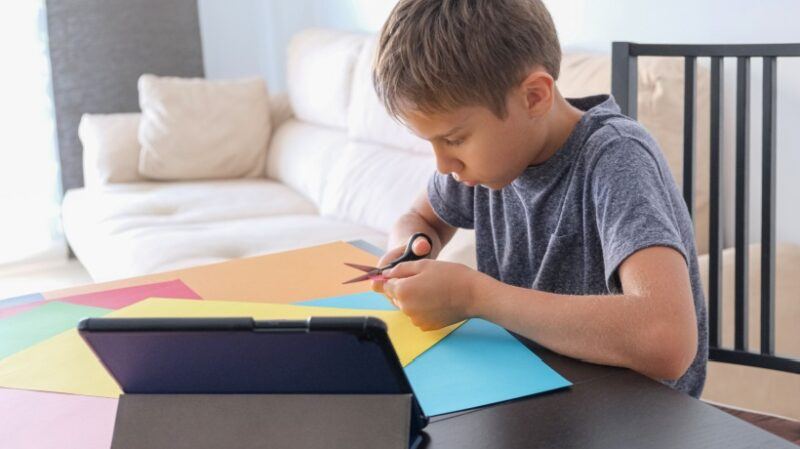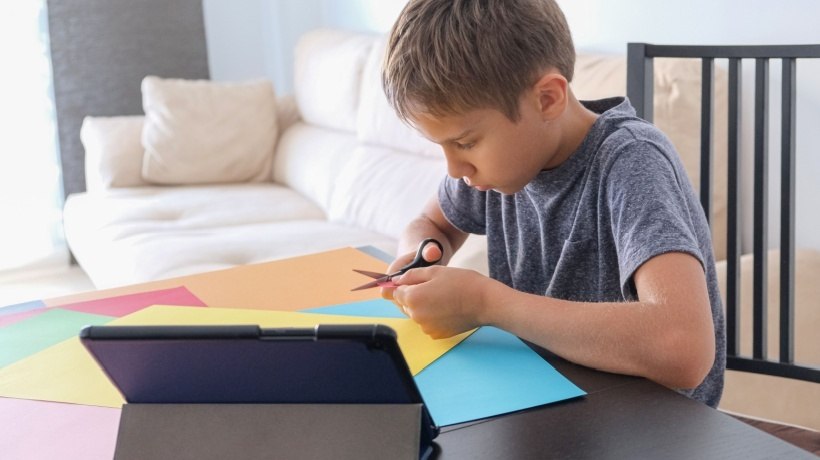
How Kinesthetic Learning Impacts Learning Outcomes
Everyone has their own unique way of learning. Kinesthetic learners, in particular, don’t just rely on reading or listening to grasp concepts. They prefer to use their bodies, especially their hands and movements, to understand and remember information. This hands-on approach not only helps them absorb knowledge faster but also allows for a deeper understanding of the subject matter. Whether it’s through simulations, experiments, interactive games, or creative sessions, kinesthetic activities make learning more enjoyable and interactive. However, how can you adopt this teaching method in an online environment? How can you transfer the physicality of kinesthetic learning to a screen? Below, we have gathered some ideas to show you how to turn your virtual classroom into a more dynamic and interactive learning environment.
6 Creative Ways To Integrate Movement Into Online Learning
1. Virtual Labs And Simulations
Virtual labs and simulations provide students with the opportunity to adjust variables, run tests, and observe the immediate consequences of their actions. The best part here is that all these things happen without any safety risks or the need for costly equipment. In a chemistry class, for example, students can explore various elements and substances, while for physics, they can test out different forces and movements, witnessing the results of their experiments in real time.
2. Physical Activity Breaks
Long hours in front of a screen can be exhausting, so why not mix things up with some physical activity breaks? These short, enjoyable breaks are a great way to give students some energy and help them refocus. Think of it as a quick break right in the middle of a lesson. One suggestion is to have stretching sessions, where you guide your students through a series of stretches to loosen up tight muscles. This can be extremely beneficial if they spend too much time sitting in a chair. For the feel of a quick workout, even a simple jumping-jack challenge can do.
3. Interactive Whiteboards
Interactive whiteboards, as well as whiteboard functions in videoconferencing applications like Zoom, create a dynamic environment for students to physically interact with their educational materials. Rather than just listening to a lecture, students can engage by drawing, writing, and manipulating objects on the screen. For instance, in maths, students can be invited to the virtual whiteboard to solve problems or explain concepts. This simulates the traditional classroom experience and encourages movement, even if it’s only through the screen using a mouse or touchpad.
4. Role-Playing
Role-playing is not just for drama class; it can be valuable in any subject, even in an online setting. Begin by assigning roles to students based on the lesson content. For example, in a history class, students can play the roles of historical figures. Likewise, in a science class, they could participate in a debate on different scientific theories, and in language arts, they could act out scenes from a book to practice dialogue and expressions. This interactive method helps students understand and retain the material more effectively while also adding a fun element to the educational experience.
5. Hands-On Projects
Adding movement to virtual learning may appear challenging, but hands-on projects offer an excellent solution to keep students involved. For example, in biology, students can build mini greenhouses with everyday materials instead of just studying plants. In geometry, students can form shapes using straws and clay. Even basic tasks, like making a collage, can have a significant impact. These activities not only make lessons more interesting but also promote innovation and analytical thinking.
6. Movement-Based Learning Games
Movement-based learning games are interactive exercises that combine physical activity with educational content. They have the power to transform the learning process into something more engaging and energizing. A popular choice among these games is a virtual scavenger hunt where students are tasked with finding and showing items from their homes that are relevant to the class. For example, students may be instructed to locate an object that represents a living organism in biology class. This activity not only promotes physical movement but also helps students connect what they learned and practice in class with real-world objects.
Resources For Online Kinesthetic Learning
Interactive Videos
There are many platforms out there that help educators transform ordinary videos into interactive learning resources. With these tools, you can seamlessly add questions and tasks directly to the video content. For example, in a geography lesson, you could insert a prompt that challenges students to locate different countries or cities on a map. Additionally, there are platforms that offer videos aimed at getting students physically active, whether it’s through dancing, stretching, or engaging in guided exercises. These interactive activities are designed to enhance educational content, making the learning experience more unique.
Augmented Reality Apps
Augmented Reality (AR) applications combine digital elements with the physical world, resulting in captivating and interactive experiences that encourage students to actively engage with their learning materials. Whether it’s virtually exploring historical sites or conducting scientific experiments, students have the opportunity to delve into various concepts wherever they are. By transforming any space into a dynamic learning environment, AR apps make abstract ideas more accessible and easier to comprehend. Moreover, these apps often offer a range of activities that promote physical movement and active participation, catering to the needs of kinesthetic learners and enabling them to connect with the material in a practical, hands-on way.
Gamification Platforms
Gamification platforms use game elements like points, badges, levels, and challenges to engage students, spark their curiosity, and turn any lesson into an exciting adventure where students actively participate and compete while learning. At the same time, these platforms offer feedback and rewards on the spot, which are motivating for learners. Plus, gamification platforms come in many forms and offer plenty of features to accommodate your unique teaching style. Whether you specialize in math, science, language, or history, there is a suitable solution available to enhance your kinesthetic learning experience.
Conclusion
Exploring kinesthetic learning techniques can truly enhance your online learning experience. You’ll be amazed at how even small activities like taking short breaks or participating in interactive exercises can make a significant impact. Always remember that students thrive when they are actively engaged and fully involved. So, why not give it a try? After all, with advancing technology and the availability of so many tools, the possibilities for creating immersive and interactive virtual learning experiences are endless.

